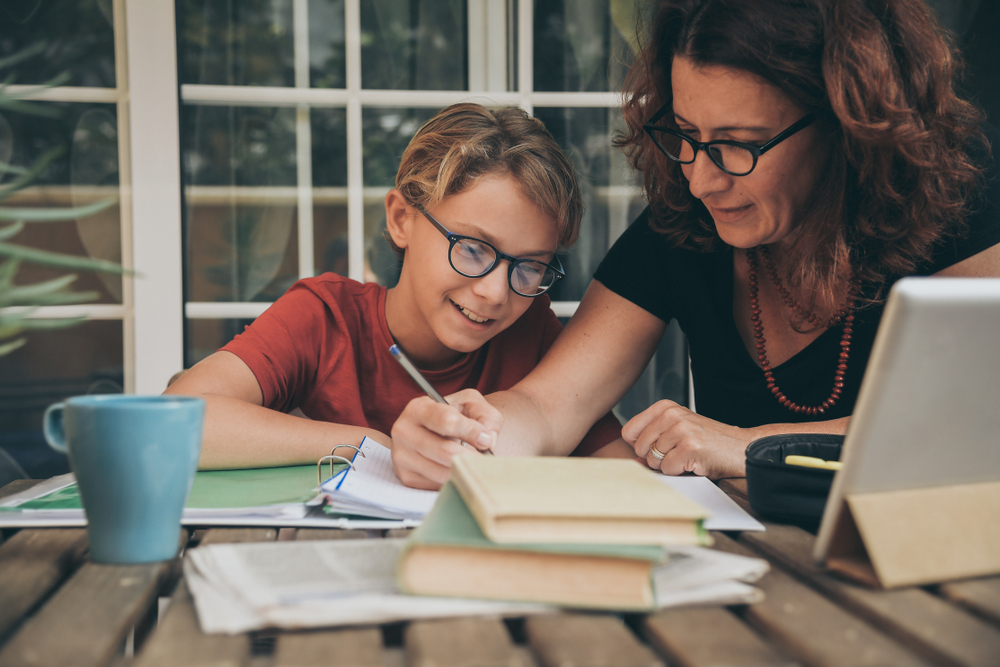Published Jun 13, 2022 in www.cbc.ca
Authored by Jessica Wong
Some young learners are struggling to build early reading skills while others stumble over math concepts. Repeated pandemic pivots have left students out of practice with classroom learning, impacted their mental health and distanced them from peers. The CBC News series Learning Curve explores the ramifications of COVID-19 for Canadian students and what they’ll need to recover from pandemic-disrupted schooling.
When he’s not in class or doing homework, basketball is Zane Sikaneta’s life. So when the pandemic shut down the courts and left him with only his family for teammates, it took a major toll on the 14-year-old from Toronto.
Socializing with peers and being physically active “affects every aspect of your life,” he said. “You don’t notice it until you can’t do it anymore.”
Although the Grade 8 student kept active — taking bike rides with family, for instance — Sikaneta said that losing basketball as his physical outlet affected his ability to focus in class and lowered his sense of motivation.
Now that team sports have resumed and he can play freely again, he says, life’s looking much better.
Much attention has been paid to the possible effects of the pandemic on reading or math skills, but much less has been given to a significant drop in students’ daily physical activity after COVID-related lockdowns began in March 2020.
While daily physical activity levels for students were on the radar of health researchers even before COVID-19, this pandemic plummet has accompanied a shift toward a more sedentary school culture.
As the world opens up in the wake of the pandemic, experts are sounding the alarm for kids to get active, and are sharing ways to get kids moving.
More inactivity, screens ‘a collateral consequence’ of pandemic for kids
Halifax-based researcher Sarah Moore tracks how much physical activity Canadian children and teens are getting — whether they’re meeting the Canadian 24-Hour Movement Guidelines for Children and Youth, for example, which look at physical activity, screen time and sleep.
Moore, an assistant professor at Dalhousie University’s School of Health and Human Performance, said that, prior to COVID-19, less than 20 per cent of Canadians under 18 were meeting those movement guidelines — a figure that already had experts worried.
In April 2020, a month after the pandemic was declared, a cross-country survey by Moore and other researchers found those movement numbers had plummeted, with less than three per cent of Canadian kids meeting guidelines. In a follow-up study six months later, and after students began returning to in-person school, they found that figure had risen to about five per cent.
However, Moore remains concerned that close to 95 per cent of Canadian children and teens were not hitting the mark.
Statistics Canada noted that physical activity levels in Canadians age 12 to 17 were more than 13 per cent lower in the fall of 2020 than they were for the same period two years prior. Physical activity in adults changed only minimally over that same interval, with older adults actually reporting an increase in levels of activity.
“The physical inactivity and increased screen time should really be considered a collateral consequence of the pandemic for these kids,” said Moore, who’s worried about young Canadians’ reduced fitness levels, and the possibility of higher levels of depression and anxiety due to the pandemic.
Now, with Canadians returning to pre-pandemic levels of activity, Moore feels it is the perfect time to think more creatively about movement and activity for kids.
For parents, that could mean not just enrolling their kids in sports, dance or other classes, but adding less structured ways to get moving to daily routines, like post-dinner family walks or having kids “biking, walking or wheeling to school,” she said.
- Do you have a question about how kids are recovering from pandemic-disrupted learning? Do you have an experience you want to share, or some ideas that could help get kids back on track at school? Send an email to ask@cbc.ca.
Educational decision-makers can invest in outdoor learning spaces, while policymakers could open more playgrounds, sports fields and similar spaces where kids and community members can be physically active safely.
Movement goes beyond individual responsibility, Moore said: “It goes a lot bigger than that.”
Getting children active in school
After two years of pandemic protocols in classrooms, where children were expected to stay seated at a distance and watching videos sometimes replaced talking to neighbours at lunchtime, researchers say now is the time for a major rethink of how we get children active in schools.
- We asked Canada’s provincial and territorial governments about their education recovery plans. Here’s what they told us.
School is “an ideal place to help promote healthy behaviours,” said Travis Saunders, an associate professor in applied human sciences at the University of Prince Edward Island.
However, if school is where kids are learning to “use screens throughout the day for all activities,” reinforcing the habit of spending most of the day sitting and not moving frequently, “that’s just adding on to a trend that’s already going in the negative direction in society at large,” Saunders said.
Along with his co-authors in a recently published report that shared recommendations to counteract school-related sedentary behaviour, Saunders notes how often students should be moving around, and encouraged using screen time sparingly, along with other suggestions to guide educators juggling classroom challenges.
“If teachers and schools can do all those things, we know that we’re going to be doing everything we can to benefit students in terms of their learning, but also maximizing their health,” Saunders said.
More activity ‘making me feel better,’ says student
Incorporating more movement and activity for students is important to principal Rita Tsiotsikas. She touted the motto “healthy minds, healthy bodies” as part of her popular Wellness Week spring event, which resumed this May at Winchester Junior and Senior Public School in Toronto.
“A lot of our community lives in apartments, kind of like myself. If you’re living in a small space, gyms are closed, other facilities were closed for a lot of the pandemic, what are you doing other than kind of sitting on-screen?” she explained.
“How do kids learn to re-engage with each other?” Tsiotsikas asked. “What a perfect way: doing interactive, non-competitive, kind of fun activities outside and inside the school.”
May’s event saw guests from community groups visit the school and lead students in activities. As younger children played Octopus in a grassy field, older students learned circus arts under the shade of trees.
Still others had a Cricket 101 session in the gym, taught by members of the Ontario Schools Cricket Association.
The week’s worth of activities matched perfectly with the OSCA’s goals, said association director Ranil Mendis, adding that “one of the key objectives in our lesson planning is to make kids run and be active, and also to instill that love of physical activity through the sport.”
Shortly after trying her hand at juggling alongside her classmates, Winchester Grade 7 student Joanne Abdalla said she’s feeling the benefits of more movement after being cooped up amid the pandemic.
“It’s really fun for me to explore these new activities that I’ve never done,” said the 13-year-old.
“I have a better state of mind… It’s making me feel better. Recharging my batteries.”




